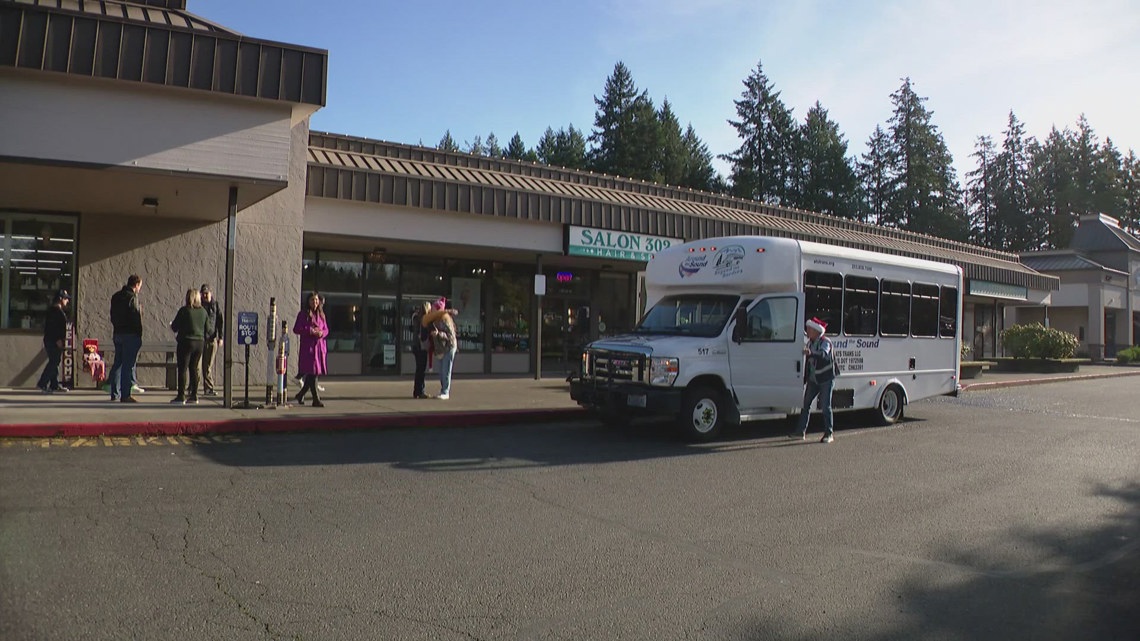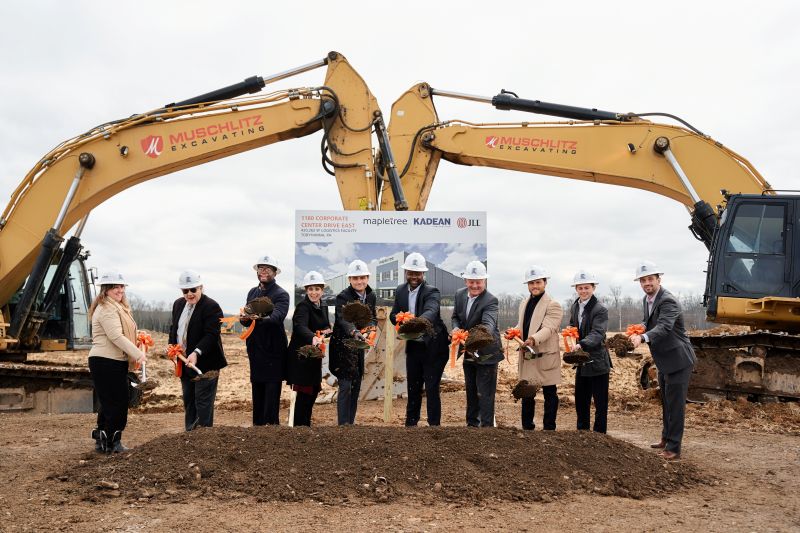Tech helping achieve excellent results, APEMCL chief – The Hans India

Report on Andhra Pradesh Environment Management Corporation Limited (APEMCL) Achievements in Sustainable Development
Introduction: Aligning with Global Sustainability Goals
The Andhra Pradesh Environment Management Corporation Limited (APEMCL) has reported significant achievements in environmental protection over the past year, leveraging technology to align its operations with several key United Nations Sustainable Development Goals (SDGs). At an event marking his first year in office, Chairman Polamreddy Dinesh Reddy highlighted the corporation’s commitment to creating a strong, transparent system for industrial waste management, thereby contributing to a sustainable future for the state.
Technological Innovation for Responsible Industry (SDG 9 & SDG 11)
APEMCL has successfully integrated technology to build resilient infrastructure and foster sustainable industrialization, directly addressing SDG 9 (Industry, Innovation, and Infrastructure). This approach also enhances the safety and sustainability of communities, a core target of SDG 11 (Sustainable Cities and Communities).
- AP Online Waste Exchange Portal: A dedicated digital platform enables real-time monitoring of the entire waste management lifecycle, from generation to final treatment.
- GPS Tracking System: All vehicles transporting hazardous and liquid waste are equipped with GPS trackers, ensuring transparent and secure transit while preventing illegal dumping that could harm communities and ecosystems.
Key Performance Indicators in Waste Management
The corporation’s efforts have yielded measurable results, demonstrating a clear impact on environmental management and responsible production.
Progress in Responsible Consumption and Production (SDG 12)
APEMCL’s initiatives are central to achieving SDG 12 (Responsible Consumption and Production) by ensuring the environmentally sound management of waste throughout its life cycle.
- Portal Registrations:
- Waste Generators: 1,270
- Waste Receivers: 243
- Registered Vehicles: 1,793
- Waste Processed (Previous Financial Year):
- Hazardous Waste: 6,49,033 tonnes were safely transported to dumping yards, recycling units, and cement plants for co-processing, minimizing their environmental impact.
- Fly Ash: 82,90,349 tonnes were supplied to brick and cement industries, promoting the reuse of industrial by-products.
Protecting Water Resources (SDG 6 & SDG 14)
The corporation has made substantial strides in safeguarding water bodies, contributing to SDG 6 (Clean Water and Sanitation) and SDG 14 (Life Below Water).
- Liquid Effluent Management: 19,66,201 kilolitres of liquid effluent were directed to appropriate treatment facilities, preventing the pollution of freshwater sources.
- Marine Ecosystem Protection: The APEMCL Marine Discharge Application is actively used to monitor the treatment and discharge of industrial wastewater into the sea, protecting marine biodiversity from harmful pollutants.
Commitment to a Circular Economy and Future Goals (SDG 12)
APEMCL is actively implementing the government’s Circular Economy Policy, which focuses on processing and reusing waste materials to generate value. This “wealth from waste” approach is a cornerstone of sustainable production patterns under SDG 12.
Future Directives for Enhanced Sustainability
Looking ahead, APEMCL plans to strengthen its environmental safeguards and continue its contribution to the SDGs through the following actions:
- Mandatory registration of all new industries with the corporation to ensure compliance from inception.
- Establishment of new effluent treatment facilities and solid waste dumping units in key industrial clusters.
- A renewed commitment to working with greater dedication towards comprehensive environmental protection and sustainable development.
Analysis of Sustainable Development Goals in the Article
1. Which SDGs are addressed or connected to the issues highlighted in the article?
- SDG 6: Clean Water and Sanitation: The article discusses the management and treatment of industrial wastewater. Specifically, it mentions that “19,66,201 kilolitres of liquid effluent were sent to treatment facilities” and the use of the “APEMCL Marine Discharge Application” to monitor the discharge of industrial wastewater into the sea. This directly relates to ensuring the availability and sustainable management of water and sanitation.
- SDG 9: Industry, Innovation, and Infrastructure: The core theme of the article is the use of technology and innovation to improve industrial processes, specifically waste management. The creation of the “AP Online Waste Exchange Portal” and the use of “GPS trackers installed on vehicles” are examples of building resilient infrastructure and fostering innovation for sustainable industrialization. The article states, “excellent results are being achieved in environmental protection with the support of technology.”
- SDG 11: Sustainable Cities and Communities: The article’s focus on managing industrial waste, including hazardous waste and fly ash, is crucial for making cities and human settlements inclusive, safe, resilient, and sustainable. Proper waste management, as described, reduces the adverse environmental impact of industrial activities often located near urban areas. The plan to “set up effluent treatment facilities and solid waste dumping units in industrial clusters” supports this goal.
- SDG 12: Responsible Consumption and Production: This is the most prominent SDG in the article. It directly addresses the environmentally sound management of industrial waste. The implementation of a “Circular Economy Policy” to ensure “waste is processed and reused instead of being dumped” is a key aspect of this goal. The management of hazardous waste, liquid effluent, and the reuse of fly ash all fall under the umbrella of ensuring sustainable consumption and production patterns.
- SDG 14: Life Below Water: The article explicitly mentions the “APEMCL Marine Discharge Application, which supports APPCB officials in monitoring the treatment and discharge of industrial wastewater into the sea.” This initiative is directly aimed at conserving and sustainably using the oceans, seas, and marine resources by preventing and reducing marine pollution from land-based industrial activities.
2. What specific targets under those SDGs can be identified based on the article’s content?
-
Target 6.3: By 2030, improve water quality by reducing pollution, eliminating dumping and minimizing release of hazardous chemicals and materials, halving the proportion of untreated wastewater and substantially increasing recycling and safe reuse globally.
- The article’s mention of sending “19,66,201 kilolitres of liquid effluent… to treatment facilities” and monitoring marine discharge directly contributes to reducing water pollution from industrial sources.
-
Target 9.4: By 2030, upgrade infrastructure and retrofit industries to make them sustainable, with increased resource-use efficiency and greater adoption of clean and environmentally sound technologies and industrial processes.
- The article highlights how APEMCL is achieving “excellent results by integrating technological support into environmental protection.” The use of an online portal and GPS tracking for waste transport represents the adoption of clean and environmentally sound technologies in industrial processes.
-
Target 11.6: By 2030, reduce the adverse per capita environmental impact of cities, including by paying special attention to air quality and municipal and other waste management.
- The corporation’s work in “streamlining the transport and treatment of industrial waste through scientific and eco-friendly mechanisms” directly addresses the “other waste management” aspect of this target, reducing the environmental burden of industrial activities on surrounding communities.
-
Target 12.4: By 2020, achieve the environmentally sound management of chemicals and all wastes throughout their life cycle, in accordance with agreed international frameworks, and significantly reduce their release to air, water and soil to minimize their adverse impacts on human health and the environment.
- The entire mandate of APEMCL, as described, aligns with this target. The tracking and transport of “6,49,033 tonnes of hazardous waste” to appropriate facilities is a direct action towards the environmentally sound management of waste.
-
Target 12.5: By 2030, substantially reduce waste generation through prevention, reduction, recycling and reuse.
- The article’s reference to the “Circular Economy Policy” and the specific example of supplying “82,90,349 tonnes of fly ash… to brick manufacturing and cement industries” are clear examples of promoting recycling and reuse to reduce waste.
-
Target 14.1: By 2025, prevent and significantly reduce marine pollution of all kinds, in particular from land-based activities, including marine debris and nutrient pollution.
- The use of the “APEMCL Marine Discharge Application” to monitor industrial wastewater discharge into the sea is a direct measure to prevent and reduce marine pollution from land-based industrial sources.
3. Are there any indicators mentioned or implied in the article that can be used to measure progress towards the identified targets?
- Yes, the article provides several quantitative indicators that can be used to measure progress.
- Amount of hazardous waste managed: The figure “6,49,033 tonnes of hazardous waste were transported to dumping yards, recycling units, and cement plants” serves as an indicator for Target 12.4, measuring the national recycling rate and tons of hazardous waste treated.
- Volume of liquid effluent treated: The “19,66,201 kilolitres of liquid effluent… sent to treatment facilities” is a direct indicator for Target 6.3, measuring the proportion of wastewater safely treated.
- Amount of waste reused/recycled: The “82,90,349 tonnes of fly ash were supplied to brick manufacturing and cement industries” is an indicator for Target 12.5, measuring the amount of waste material that is reused and recycled.
- Number of registered entities and vehicles: The data on “1,270 waste generators registered, 243 waste receivers registered, and 1,793 vehicles registered” on the online portal can be used as a process indicator for Target 9.4, showing the adoption rate of the new sustainable technology and management system by the industry.
4. SDGs, Targets, and Indicators Table
| SDGs | Targets | Indicators |
|---|---|---|
| SDG 6: Clean Water and Sanitation | 6.3: Improve water quality by reducing pollution and increasing safe reuse. | Volume of liquid effluent sent to treatment facilities (19,66,201 kilolitres). |
| SDG 9: Industry, Innovation, and Infrastructure | 9.4: Upgrade infrastructure and retrofit industries to make them sustainable and adopt clean technologies. | Number of registered waste generators (1,270), receivers (243), and vehicles (1,793) using the online portal and GPS tracking system. |
| SDG 11: Sustainable Cities and Communities | 11.6: Reduce the adverse per capita environmental impact of cities, focusing on waste management. | Establishment of effluent treatment facilities and solid waste dumping units in industrial clusters. |
| SDG 12: Responsible Consumption and Production | 12.4: Achieve environmentally sound management of chemicals and all wastes. | Amount of hazardous waste transported and processed (6,49,033 tonnes). |
| 12.5: Substantially reduce waste generation through recycling and reuse. | Amount of fly ash supplied for reuse in other industries (82,90,349 tonnes). | |
| SDG 14: Life Below Water | 14.1: Prevent and significantly reduce marine pollution from land-based activities. | Implementation and use of the APEMCL Marine Discharge Application to monitor industrial wastewater discharge. |
Source: thehansindia.com
What is Your Reaction?
 Like
0
Like
0
 Dislike
0
Dislike
0
 Love
0
Love
0
 Funny
0
Funny
0
 Angry
0
Angry
0
 Sad
0
Sad
0
 Wow
0
Wow
0




















































.jpg.webp?itok=0ZsAnae9#)




























